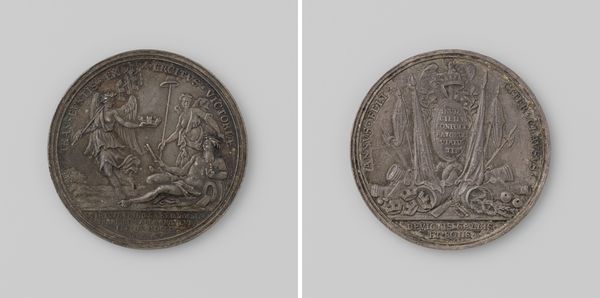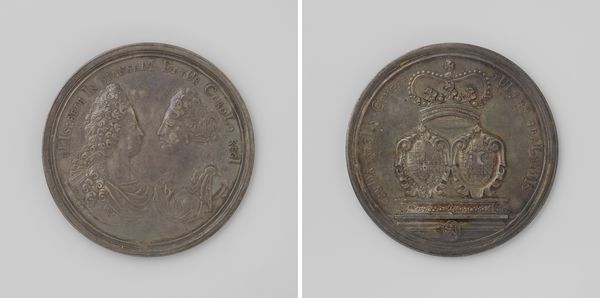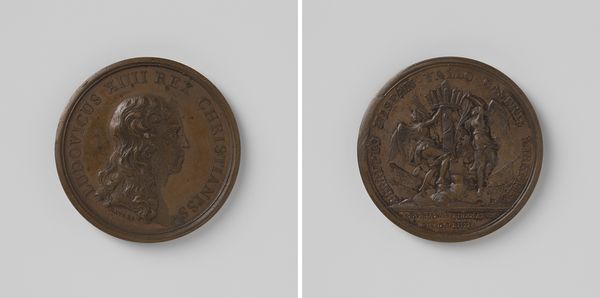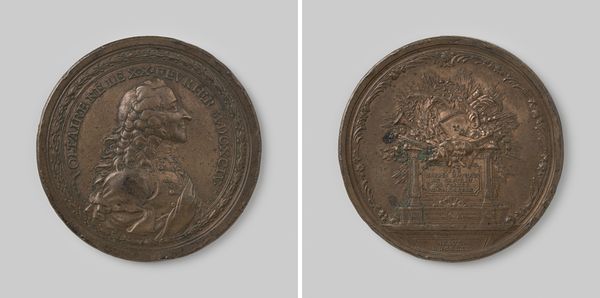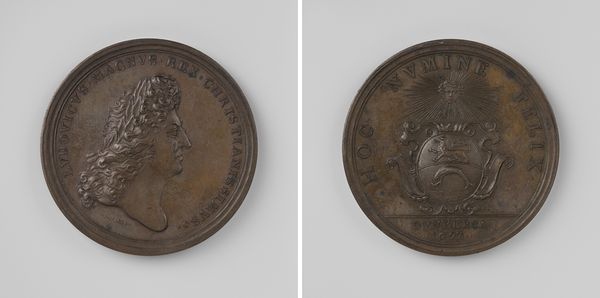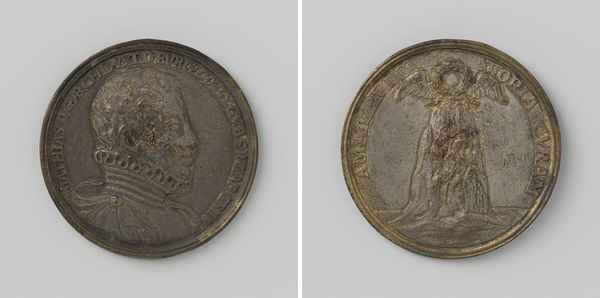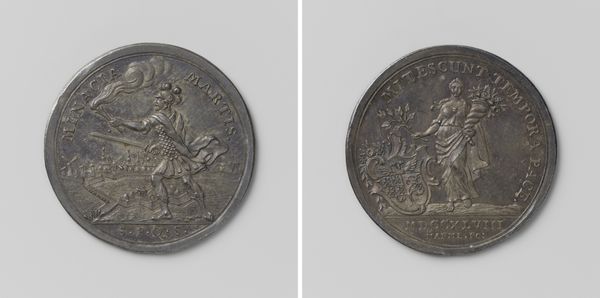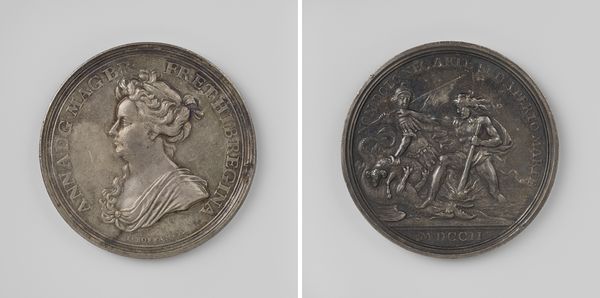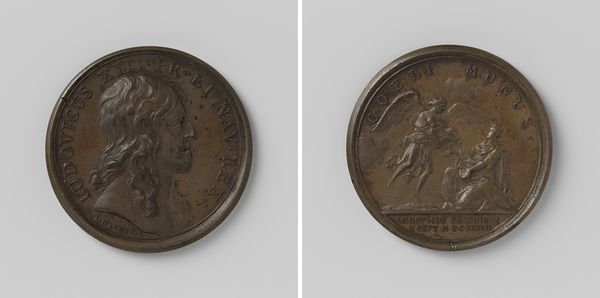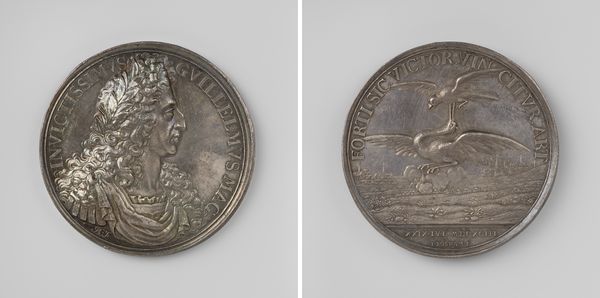
Zeeslag bij Kaap La Hogue, de Fransen verslagen door de vloot van Engeland en Holland 1692
0:00
0:00
metal, sculpture, engraving
#
portrait
#
baroque
#
metal
#
sculpture
#
sculpture
#
ceramic
#
history-painting
#
engraving
Dimensions: diameter 5.5 cm, weight 68.89 gr
Copyright: Rijks Museum: Open Domain
Curator: This metal artwork from 1692 commemorates the "Zeeslag bij Kaap La Hogue," depicting the naval battle where the English and Dutch fleets triumphed over the French. Editor: My immediate impression is of a somber tone, a kind of weighted density evoked by the dark metal and the detailed but restrained engraving. Curator: Indeed. Structurally, the coin divides into two distinct sides. One profiles a figure—likely King William III given the context and inscription—while the reverse vividly depicts the naval conflict. Note how the inscription "LIBERTAS PER ALTI NOSTRIS" arches above the scene, framing the chaos. Editor: And the deliberate contrast between the regal portrait and the churning naval scene raises interesting questions. The materials themselves are fascinating; working with metal requires tremendous labor. The medal was made to circulate, which brings its historical record into wider society. It also evokes power relations embedded in its production, patronage and trade. Curator: Precisely. Considering the coin's composition, observe how the artist uses the circular format to create a sense of enclosure and intensity. The marine figures emerging from the sea are incredibly potent; these evoke ideas of power. Editor: It makes me think about the sheer skill needed to engrave such minute details into the metal. A medium like metal demands an incredibly robust physical effort – the labor is evident even in this diminutive form. How different from the heroic scene it depicts! Curator: Quite. But also think about how the metal form elevates a singular moment of victory to the level of something almost classical or eternal. The density of information is designed to elicit respect, both visually and ideologically. Editor: It is remarkable how the labor and physical processes intertwine. This medal represents more than just a historical record; it signifies the material embodiment of power and political ambitions, right down to the sweat and toil embedded in its crafting. Curator: Agreed. It serves as a powerful object lesson, showcasing the ways historical events and materials themselves merge together to craft both memory and meaning. Editor: Seeing history literally pressed into metal really shifts one's perspective on power.
Comments
No comments
Be the first to comment and join the conversation on the ultimate creative platform.
